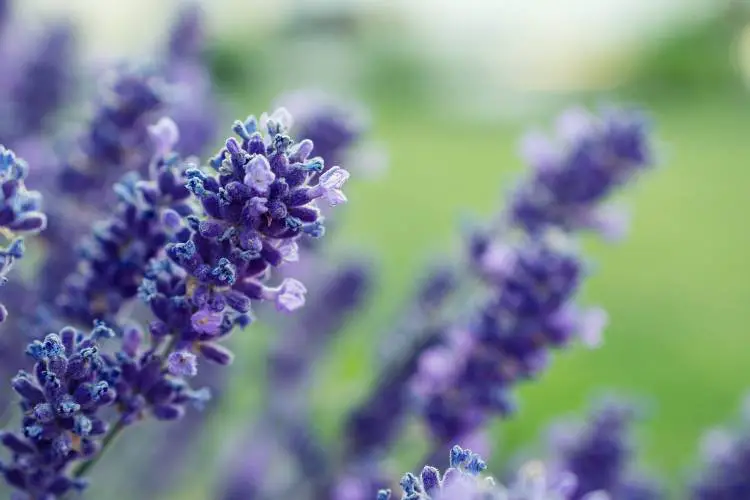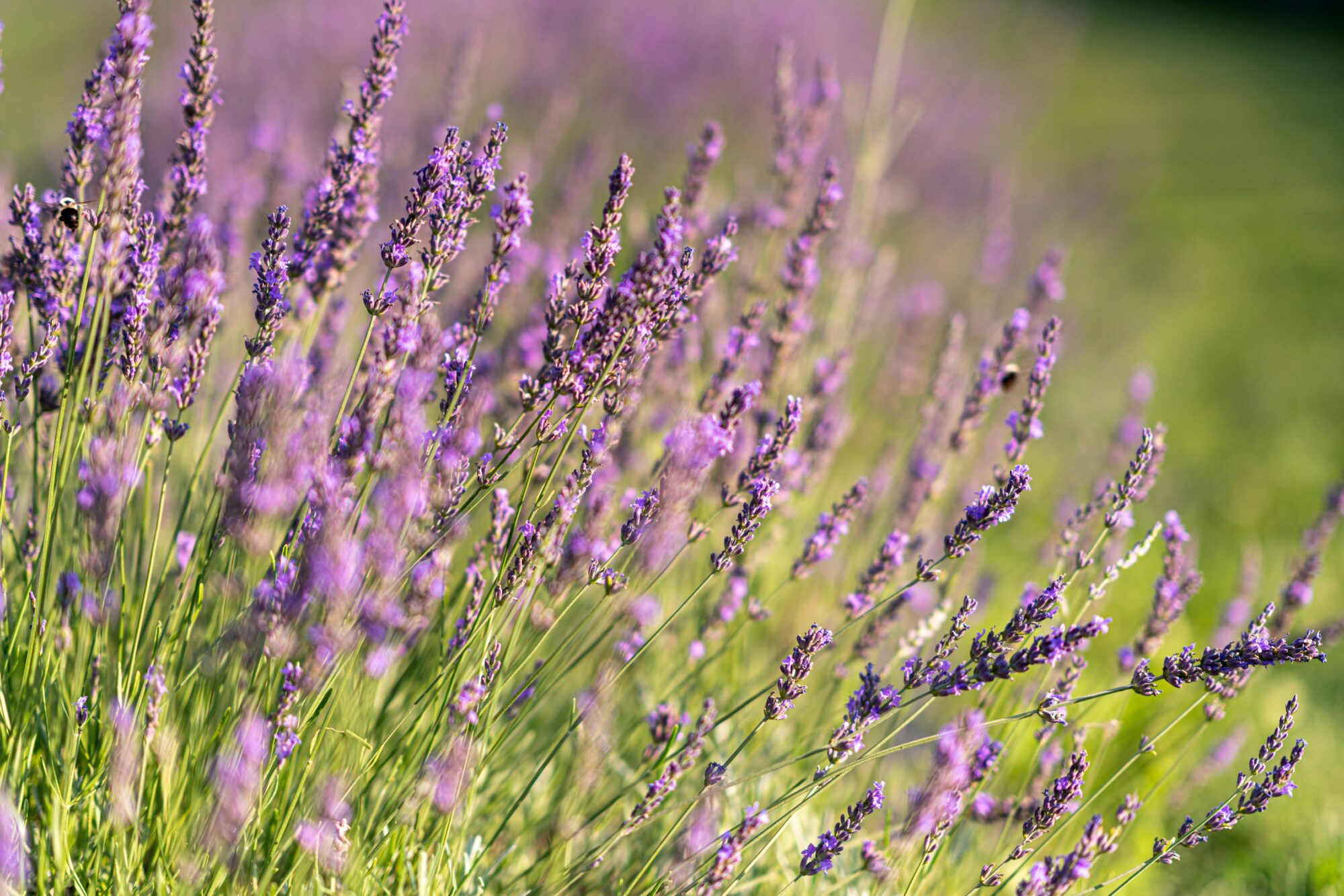Lavender Deadheading – When & How Should You Do It?

The only time flowers look attractive and charming is when they blossom. They make a garden or its surroundings look astonishing. However, flowers have different seasons in which they blossom.
But after blossoming, flowers lose their beauty, becoming distasteful with fading and wilting petals. As a result, instead of blossoming, flowers begin to set seeds.
Is there any way to prevent this? Can we bring our flowers back with fresh, beautiful blossoms and stop them from making seeds? Absolutely, yes.
When flowers are done blossoming, their leaves start fading, they direct their energy towards seed setting instead of flowering again. This energy can be focused towards blooming again by the means of Deadheading.
As a gardener, do you know how to deadhead? Do you know when you should do it? The deadheading process differs for each flower, and you must know when and how to do it for a particular flower.
This article aims to answer the question of when and how to deadhead a Lavender.
When Should Lavenders Be Deadhead?
Knowing when to carry out deadheading for a particular flower is essential to get the appropriate result.
Deadheading is often practiced when fresh flowers are needed, but the word “when” does not only refer to that.
There are specific periods of the year when deadheading is best done for every flower. There are also signs that show our flowers are due for deadheading.
So, when should a lavender be deadheaded? We have provided answers to every question you have about deadheading lavenders.
But first, how much do you know about the lavender flower?
Lavenders are a group of flowers, including annual or herbaceous and shrub-like perennial plants with a short life span. They survive best in dry gravelly or sandy, well-drained soil, and gardeners need meager or zero fertilizer to grow any form of lavender.
Lavenders develop well under full sun and temperate weather conditions. There are many species of lavender, including English lavender, Hidcote English lavender, and Munstead English lavender, to mention a few. However, lavenders blossom at different times; English lavender is the most popular.
Apart from being attractive, they have great importance. Deadheading provides lavenders with essential oil as it leans on the output of their blossoms.
Lavender oil has significant uses, and this is enough of a reason to protect our lavender. Another interesting fact about lavender is that each color has a meaning. Purple-colored lavender is attached to royalty, while pink is to youth.
There are also violet lavender flowers considered sacred, precious, and delicate.
To maintain a blooming lavender in your garden, you must deadhead them after every blooming. Deadheading may seem challenging because it requires a consistent daily check on flowers in your garden. But the result is worth it.
Below are answers to when you should deadhead your lavenders.
1. When You Want Your Lavender Flowers to Re-Bloom
This is no doubt the primary reason why flowers are deadheaded. After complete flowering, lavender, like other flowers, makes seeds instead of blooming again. The gardener now must decide their fate.
Lavenders are part of the most beautiful flowers that exist on earth. They display beautiful colors, including purple, blue, violet, lilac, and others. Lavenders easily give off a pleasant fragrance.
All these attributes come best when they blossom; gardeners will have no choice but to have their lavenders re-bloom again and again. And this is the best time to deadhead.
2. After the Complete Blooming Cycle
As said earlier, every flower has its particular period during which you can deadhead it. For some lavenders (midseason lavenders like English lavender), August is the best month for deadheading.
Appropriate deadheading and pruning shears of lavender involve the elimination of faded leaves from the plant and bring about higher and improved blossom, making the flowers more attractive and healthy.
Midseason lavenders bloom from July to early August, after which their leaves start fading and wilting. This is the best time to deadhead and stop them from setting seeds and littering the surroundings.
Deadheading lavenders during mid-spring and summer help to prolong their season and make them flower profusely.
There are also early-season lavenders; some are French and some English. They are best known for their early spring blossom, and they flower in May, with another bloom in June and finally in the late summer or fall.
Ensure you deadhead these flowers after their flowering has been completed.
Late-season lavenders also exist. They are mostly lavender, another form of lavender, though some English lavenders blossom late. Late-season lavenders blossom by mid-summer, flowering in July or August, and tend to extend till late summer.
Though lavenders are referred to as plants with summer blossoms, some of them still show tremendous blossoms as early as spring.
3. When the Leaves Start Fading and Wilting
Photosynthesis plays a significant role in the survival of any plant. Plants with faded leaves can not conduct proper photosynthesis as they are unhealthy.
Faded leaves also hamper the circulation of nutrients to various parts of the plant, which will not give room for proper growth and development.
When the leaves of lavender fade, they tend to produce seeds and blooming is impossible. Gardeners should keep their lavenders in good health by removing faded flowers and deadheads at the appropriate time to trigger the possibility of re-bloom.
How Should Lavenders Be Deadhead?
Blooming is highly essential when we talk about flowers. It brings out the true beauty of flowers, displaying a series of colors and making them very attractive.
Blooming does not occur throughout the life span of flowers, and each flower has a specific period of blooming they are attached.
When do lavenders bloom? As mentioned earlier, lavenders exist in different forms with different bloom periods. The most common of the lavenders are the English ones, which blossom between July and early August.
After the blossoming periods of lavenders, deadheading is necessary to bring back new flowers and elongate their life span.
Lavenders exhibit a mesmerizing fragrance. It is almost impossible to find anyone who comes into a field of lavender and does not react emotionally to the scent and beauty of these flowers.
They are usually grown for their essential oils, which come from their blossom and serve great uses.
Essential oils from lavender are used for anesthetic, food-making, and recreation purposes.

They are helpful for the curing of various skin problems like eczema, acne, etc. You can also use the essential oils from lavender as skin lighteners and to prevent inflammation. Due to their pleasant scents, these flowers are also employed in perfume production.
Therefore, who would not like to deadhead lavenders if the essential oil comes from their blossom? No one, I guess.
However, gardeners can have issues with how to deadhead lavenders. This may be due to a lack of deadheading knowledge or different types of lavenders. If the question is “how should I deadhead lavenders,” the answers are as follow;
1. Regular Elimination of Spent or Faded Blossoms
There should be no room for spent or faded blossom on lavender plants as they bring about the setting of seeds which is not an ideal condition for re-blooming. Doing this brings about bushy and thicker blossoms and extends the life span of lavenders.
2. Eliminate Flowers Down the Wands of Lavenders
Lavenders are of three main types, the English or true lavender, the Spanish lavender, and the Lavandin, and they flower at different times of the year. All flowers are generally deadheaded just after blossoming. You can do this by cutting flowers that are below their wands.
Gardeners should, however, avoid cutting off all green flowers on the lavender plants as they will not survive because photosynthesis will not be possible.
Light trims can also be made in late summer to keep the lavenders in shape. Doing this helps improve our lavender’s health and extends their blooming periods.
3. Avoid Cutting into the Woody Areas on the Plant
Gardeners should be careful during cutting and avoid cutting areas without leaves as they can harm the plant.
A way to avoid this is by making cuts using a set of two leaves above the leafless part as a boundary. This enhances the growth of lavenders by bringing about stability and good health. It also makes lavender plants’ blossoms thicker.
4. Use Clean and Sharp Equipment for Cutting and Trimming
Gardeners should use neat and disinfected equipment during deadheading. The importance of this precaution is to prevent lavenders from getting infected by bacteria which may cause the death of the plants or disturb their growth and development.
Rough cuts do not get healed quickly. Therefore, gardeners must not make use of blunt equipment during cutting.
5. Monitor and Look After Your Lavender
Take good care of your lavenders to ensure they are in good shape. Also, provide your lavenders with well-drained sandy soil under fully sunny conditions as they flourish best, getting about 8 hours of sun every day.
Avoid watering the soil too profoundly and irrigating lavenders automatically. It would be best to allow the soil gets almost dry before engaging in another. Keep the foliage of lavenders dry, and provide reasonable space between lavenders so drying air can circulate. Lavenders are so blessed that they can grow less fertile soil, so gardeners should avoid adding fertilizers.
Do not use fertilizers because they make lavender leggy with very blossoms, hence, low essential oil content.
Final Words
While it is good to take pride in deadheading your lavenders and bringing about new growth of blossoms, it would be best to avoid letting your flowers set seeds if you want to see them blossom again.
Lavenders can flower throughout the year. This is because they come in different types, each flowering at different periods.
Deadhead your lavenders today to keep enjoying their tremendous benefits.